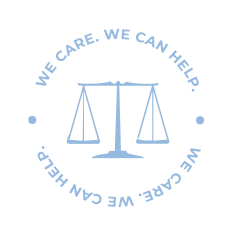Chronic Myeloid Leukemia (CML) is a slowly progressing disease that affects your blood cells and bone marrow.
In the human body, blood cells originate in your bone marrow (a spongy material inside your bones. When bone marrow functions normally, it produces immature cells in a controlled way. These cells then mature into various types of blood cells which circulate in your body. These cells include red cells, white cells, and platelets.
When it comes to CML, this process doesn’t work correctly. In CML, patients have an abnormal chromosome in their blood cells, called the Philadelphia chromosome. You aren’t bone with this particular chromosome; instead, it is a result of a genetic accident that takes when in a blood-forming stem cell in the bone marrow.
Due to the genetic change, an abnormal gene called BCR-ABL turns the cell into a CML cell. Leukemia cells grow and divide, building up in the bone marrow.
Researchers estimate that one person out of every 526 people in the United States will develop CML in their lifetime.
Are there risk factors for CML?
There are only three risk factors for chronic myeloid leukemia. The first risk is radiation exposure. Secondly, as we age, the risk of getting CML increases. Lastly, it is not known why, but men get this disease at a slightly higher rate than women do.
Chronic myeloid leukemia does not run in families. So, if a relative receives a CML diagnosis, don’t assume this will increase your risk of developing the disease.
Diagnosing chronic myeloid leukemia
The average age of chronic myeloid leukemia diagnosis is 64 years old. The disease is rare in children. CML is diagnosed through tests that examine the blood and bone marrow or by routine blood work.
Most forms of cancer are assigned a stage, 1-4, based on the size of the tumor and extent of the cancer spread. However, because CML is a disease of the bone marrow, the staging process is slightly different.
After a CML diagnosis, a medical professional will conduct tests to find out if the cancer has spread. Depending on test results, doctors classify the patient’s disease into one of three groups called phases.
The three phases of CML are:
- Chronic
- Accelerated
- Blast
This classification allows doctors to make treatment decisions and predict a patient’s survival chances. Based on the number of immature white blood cells (blasts) in the blood or bone marrow, doctors will assign a CML diagnosis to the chronic, accelerated or blast phase.
Detecting chronic myeloid leukemia before it reaches the blast phase, where cells have spread to tissues and organs beyond the bone marrow, often allows for more treatment options.
Unfortunately for CML patients, symptoms don’t typically develop until later stages. CML symptoms include:
- Bleeding
- Feeling rundown, tired
- Weight loss
- Pale skin
- Night sweats
CML phases
As mentioned above, chronic myeloid leukemia is classified into three phases that are based on the number of immature white blood cells (blasts) in the blood or bone marrow. It is critical for physicians to understand what phase the patient is in to plan an effective treatment.
The lack of healthy white blood cells, red blood cells and platelets due to the increasing amount of blast cells can result in health issues. The CML patient may incur infections, anemia, easy bleeding, bone pain and a feeling of fullness below the ribs. The phase of the disease is determined by the number of blast cells in the blood and bone marrow as well as the severity of symptoms.
Chronic phase. Most patients are diagnosed in this phase. During the chronic phase, patients have less than 10 percent blast in their blood or bone marrow samples and usually respond to standard treatments.
Accelerated phase. During this stage, patients may have symptoms including fever, loss of appetite and weight loss. Patients in the accelerated phase don’t respond to treatments as well as in the chronic phase. A CML patient is in the accelerated phase if the following are true:
- The blood samples have blasts ranging from 10 percent to 19 percent.
- Basophils make up 20 percent or more of the blood.
- Thirty percent or more of the blood is made up of combined blasts and promyelocytes.
- The platelet counts are very low, not caused by treatment
Blast phase. Patients are considered to be in the blast phase once the blast cells have spread to tissues and organs beyond the bone marrow. In this phase, the patient’s bone marrow and blood samples have 20 percent or more blasts and large clusters of blasts can be seen in the bone marrow. CML acts a lot like acute leukemia in the blast phase.
Chronic myeloid leukemia treatment options
The chance of recovery and treatment options for a CML patient depends on the following:
- Amount of blasts in the bone marrow
- Patient’s age
- Blood counts
- The size of the spleen at diagnosis
- The patient’s general health
The six types of standard treatment used for CML include:
Targeted therapy. This treatment uses tyrosine kinase inhibitors (TKIs) to identify and attack specific cancer cells leaving normal cancer cells unharmed. TKIs used include:
- Nilotinib (Tasigna)
- Imatinib (Gleevec)
- Dasatinib (Sprycel)
- Bosutinib (Bosulif)
- Ponatinib (Iclusig)
Chemotherapy. This treatment uses drugs to stop the growth of cancer cells. The cells are either killed or stopped from dividing.
Biologic therapy. The patient’s immune system fights the cancer by boosting substances made by the body or in a laboratory to restore the body’s natural defenses against cancer.
High-dose chemotherapy with stem cell transplant. The patient receives high doses of chemotherapy, and there is a replacement of blood-forming cells that were destroyed by the cancer treatment. Stem cells are removed from the blood or bone marrow and stored. Once the chemotherapy is completed, the stem cells are given back to the patient through an infusion.
Donor lymphocyte infusion (DLI). Used after stem cell transplant. Lymphocytes are removed from the donor’s blood and given to the patient through one or more infusions. The lymphocytes attack the patient’s cancer cells because they don’t see them as belonging to the body.
Splenectomy. Surgery to remove the spleen.
Tasigna Lawsuit Information
The cancer treatment drug Tasigna has recently been linked to atherosclerosis, a condition that causes the arteries to narrow with the potential of causing a heart attack, stroke or internal bleeding. If you or a loved one were prescribed Tasigna to treat chronic myeloid leukemia and suffered life-threatening injuries as a result, you may be eligible for compensation.
Contact a qualified Tasigna Injury Attorney immediately to ensure your case is filed on time. Victims of Tasigna injuries have until September 2018 to file a lawsuit against drug manufacturer Novartis.
How The Carlson Law Firm can help
No one plans to take medication only for their health and well-being to worsen. If you or a loved one suffered injuries after taking Tasigna, do not go another moment without legal representation. You will always be at a disadvantage in dealing with a professional claim agent whose job is to protect the company by settling your claim for the least amount possible.
Here at The Carlson Law Firm, we have been protecting the rights of personal injury victims for over 40 years. We will advocate relentlessly on your behalf until you receive the justice you deserve. Contact us today for a free, no-obligation consultation. We are available 24 hours a day, seven days a week. We care, we can help.





